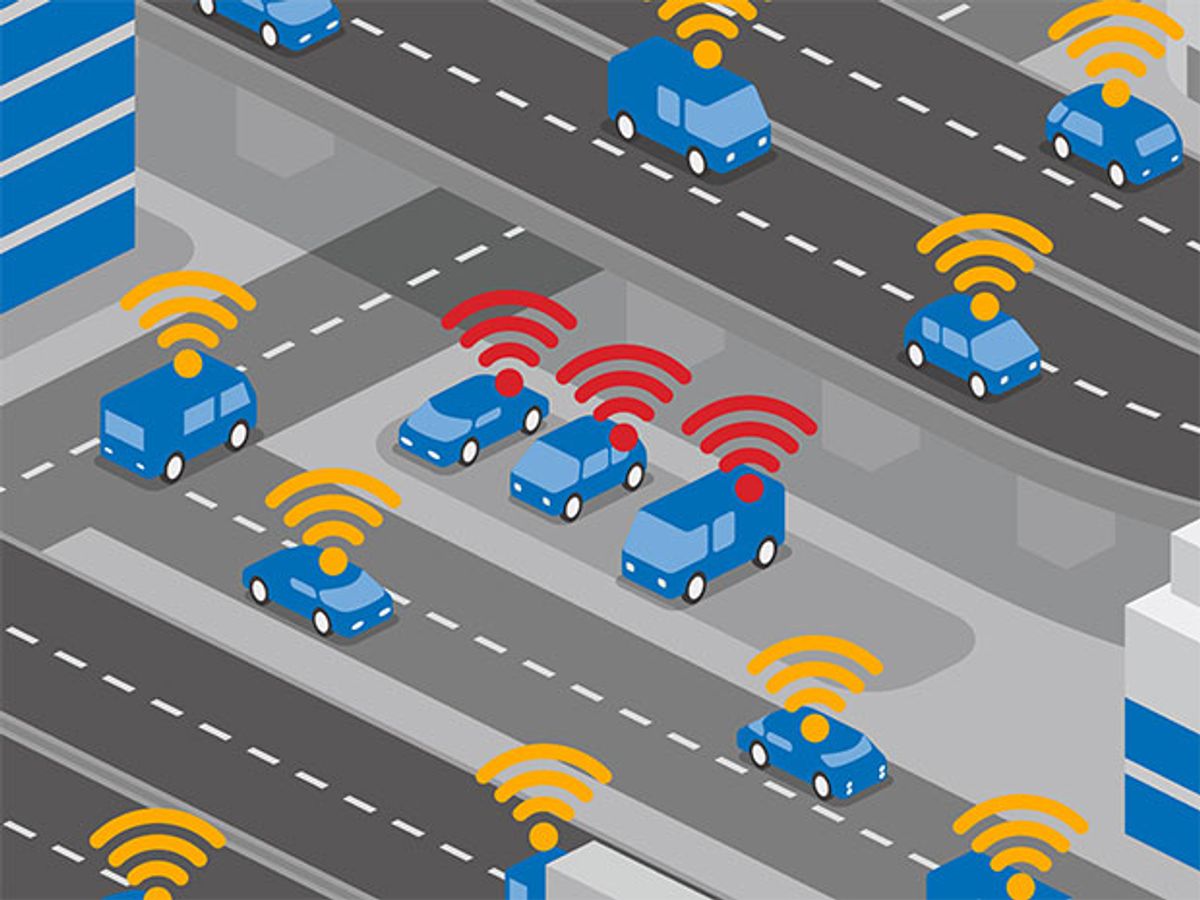When cars start talking both to one another and to traffic signals, they will sometimes suffer from the cellphone user’s bane: dropped calls. That’s because there won’t always be enough cars roaming around to serve as partners or relays.
So why not have access to parked cars? They’re shiny, they’re rested, and they are there precisely when you need them most—when few cars are plying the roads.
Until now, most concepts for smart roads have planned to fill gaps in the chain of communication with relay stations. You find such roadside units, as they’re called, in Japan and in parts of Europe. The problem is, each one carries an upfront cost of around US $50,000, according [PDF] to the U.S. General Accounting Office. Throw in maintenance and amortization and the annual cost can average $18,000.
“That’s why the U.S. government hasn’t deployed them massively,” says Ozan Tonguz, a professor of electrical engineering at Carnegie Mellon University, in Pittsburgh.
Tonguz hopes to get around the weak infrastructure by wringing more networking power out of the cars themselves. “The idea is that once people park their cars, this amenity is already there for others. The analogy I’d draw is to Skype. If you download that app on your laptop, in a way you agree to have your laptop be used as a node for other people. What goes around comes around.”
Tonguz and colleagues at CMU have founded a company, called Virtual Traffic Lights, to market just such a cooperative network service. The company’s wider goals include getting traffic lights to interact with traffic to optimize wait time. But none of that can happen before infrastructure arrives, and the company can’t afford to wait—and wait—for that. Thus the emphasis on parked cars.
When you park your car, its computer directs the radio to listen for beacons from other relay stations. It uses that data to estimate how good the coverage is, compares that estimate with those of nearby cars and any other relay stations, and decides whether to become an active relay or to go into power-saving “sleep” mode. Of course, it does all this while the engine is turned off, using power drawn from the battery.
Wouldn’t an active—that is, talkative—parked car finally drain its battery? Not so, Tonguz says: “We estimate that the average time a car is parked, at your work, is 6.6 hours. To function as a roadside unit, that car would draw only about 4 percent of the battery.”
That sip of current would go to a vehicle-to-vehicle communications standard that the U.S. Department of Transportation wants all new cars to carry by the early 2020s. It’s called dedicated short-range communications (DSRC), and it’s based on the 5.9-gigahertz band. The 2017 Cadillac CTS will be the first car equipped with such a radio.
“When a vehicle is moving, there is obstruction, for instance from high-rise buildings,” Tonguz says. “Then there’s the fading signal, as you move away. A parked car’s DSRC range can go to 1,000 meters. But from a practical perspective, it’s more like 300 meters—two or three blocks—when there’s a clear line of sight, and 140 meters when there isn’t. That’s a respectable range for a parked car.”
More tech (and patents for it) are involved, of course. Not all parked cars would be tapped, just a handful that algorithms would select according to a number of criteria, including matters of efficiency, like keeping the number of relay handoffs to a minimum. And such stationary relays would matter most during the quiet time between rush hours.
Perhaps the single greatest theme of the emerging world of cybercars is the drive to economize on capital. If most people give up on owning cars and instead rely on ride-hailing services operated by robotic systems, vehicles would work far more and sit idle far less.
And if those parked cars we still had were to pull their weight by serving as relay stations, so much the better, Tonguz argues. “We are saying there is a resource here.”
Philip E. Ross is a senior editor at IEEE Spectrum. His interests include transportation, energy storage, AI, and the economic aspects of technology. He has a master's degree in international affairs from Columbia University and another, in journalism, from the University of Michigan.



